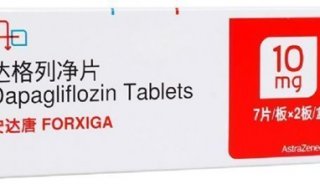强化降糖治疗发生低血糖的因素预测
德国研究者进行的一项前瞻性研究(BMC Endocr Disord. 2012 Oct 17;12(1):23)表明,低血糖是接受强化降糖治疗的2型糖尿病门诊患者的常见并发症。既往发生过低血糖、微血管疾病(如视网膜病变)和接受胰岛素治疗的患者,尤其需要注意预防低血糖发生。服用噻唑烷二酮类药物、DPP-4抑制剂与GLP-1类似物的患者发生低血糖的风险较低。
DiaRegis是一项前瞻性注册研究,入选3810例接受强化降糖治疗的2型糖尿病患者。全部3347例取得数据的患者中,12个月随访期内共出现473(14.1%)例低血糖。发生低血糖的患者糖尿病病程较长、糖化血红蛋白(HbA1c)水平更高、既往有吸烟史的比例更高。此外,发生低血糖的患者在基线时合并其他疾病如冠脉疾病、外周血管病、心衰、截肢、周围神经病变、糖尿病视网膜病变与抑郁的比例更高。
Incidence and predictors of hypoglycaemia in type 2 diabetes – an analysis of the prospective DiaRegis registry
Background
Hypoglycaemia is a serious adverse effect of antidiabetic drug therapy. We aimed to determine incidence rates of hypoglycaemia in type-2 diabetic patients and identify predictors of hypoglycaemia when treatment is intensified.
Methods
DiaRegis is a prospective German registry that follows 3810 patients with type-2 diabetes referred for treatment intensification because of insufficient glycaemic control on one or two oral antidiabetic drugs.
Results
Out of a total of 3347 patients with data available for the present analysis 473 (14.1%) presented any severity hypoglycaemia over a follow-up of 12 months. 0.4% were hospitalized (mean of 1.3±0.6 episodes), 0.1% needed medical assistance (1.0±0.0), 0.8% needed any help (1.1±0.5) and 10.1% no help (3.4±3.7), and 8.0% had no specific symptoms (3.6±3.5). Patients with incident hypoglycaemia had longer diabetes duration, higher HbA1c and a more frequent smoking history; more had co-morbid disease conditions such as coronary artery disease, peripheral arterial disease, amputation, heart failure, peripheral neuropathy, diabetic retinopathy and clinically relevant depression at baseline. Multivariable adjusted positive predictors of incident hypoglycaemia over the follow-up were prior anamnestic hypoglycaemia, retinopathy, depression, insulin use and blood glucose self-measurement, but not sulfonylurea use as previously reported for anamnestic or recalled hypogylcaemia. On the contrary, glitazones, DPP-4 inhibitors and GLP-1 analogues were associated with a reduced risk of hypoglycaemia.
Conclusions
Hypoglycaemia is a frequent adverse effect in ambulatory patients when antidiabetic treatment is intensified. Particular attention is warranted in patients with prior episodes of hypoglycaemia, microvascular disease such as retinopathy and in patients receiving insulin. On the other hand glitazones, DPP-4 inhibitors and GLP-1 analogues are associated with a reduced risk.
-
焦点事件

-
产品技术

-
焦点事件











